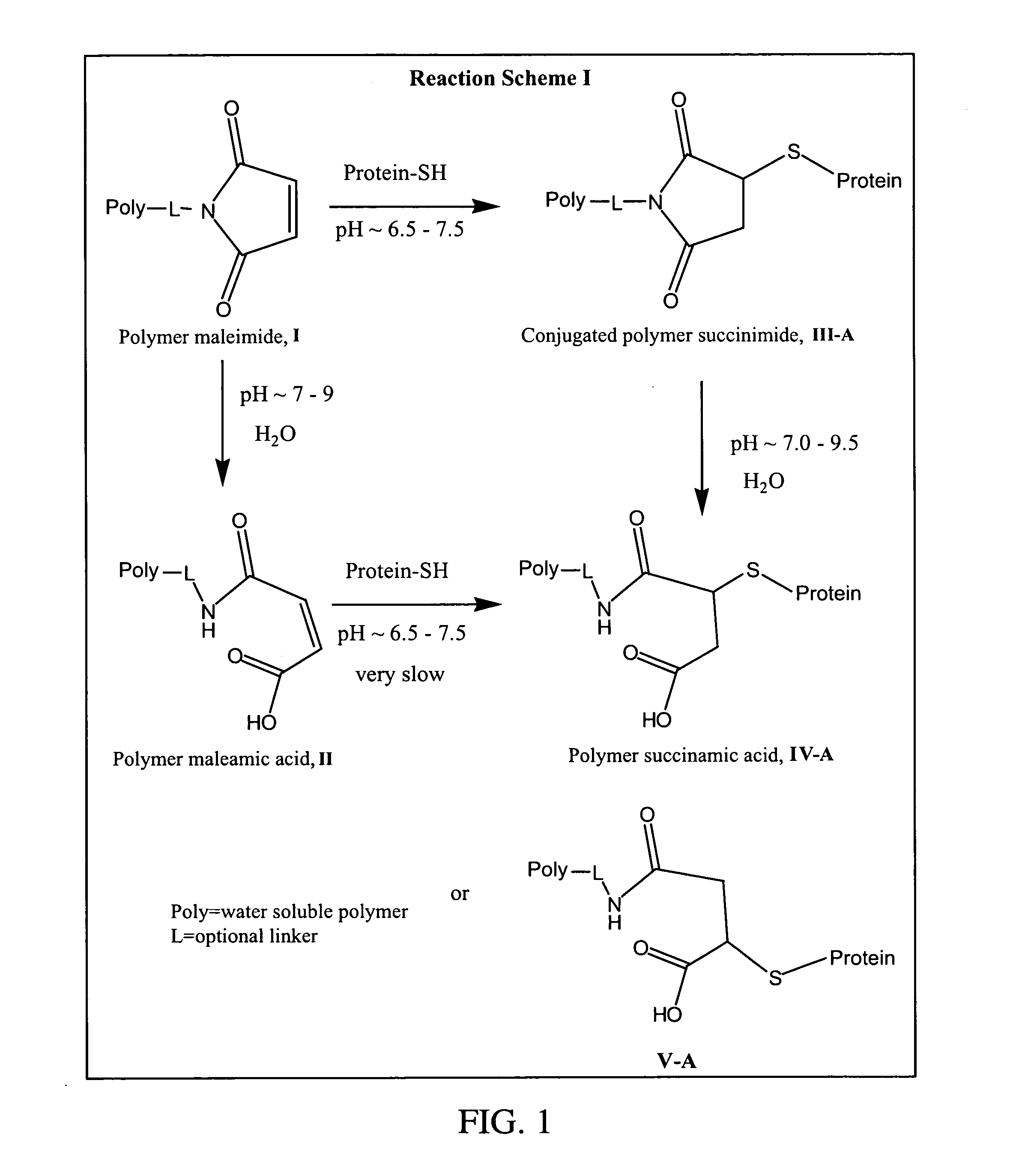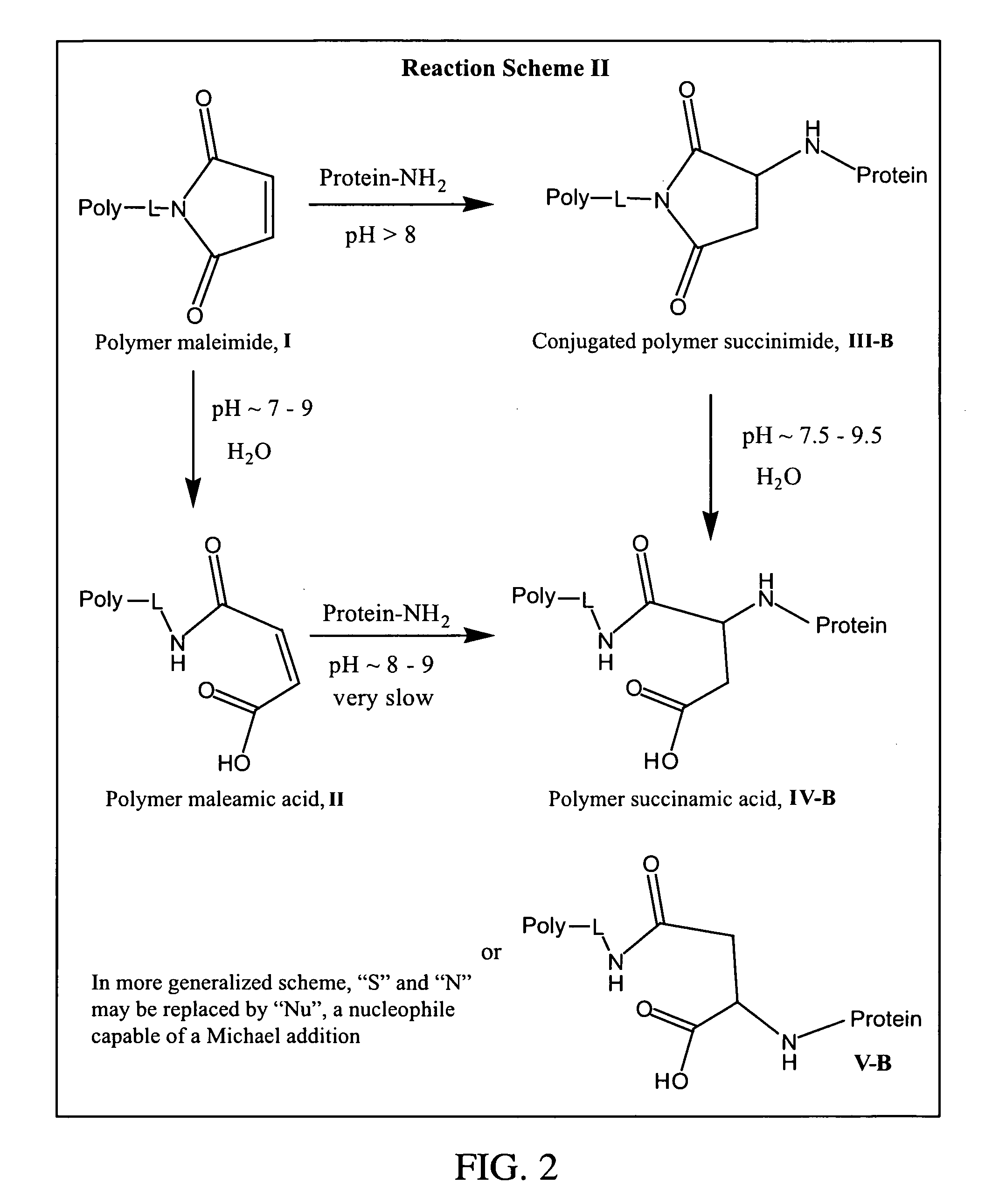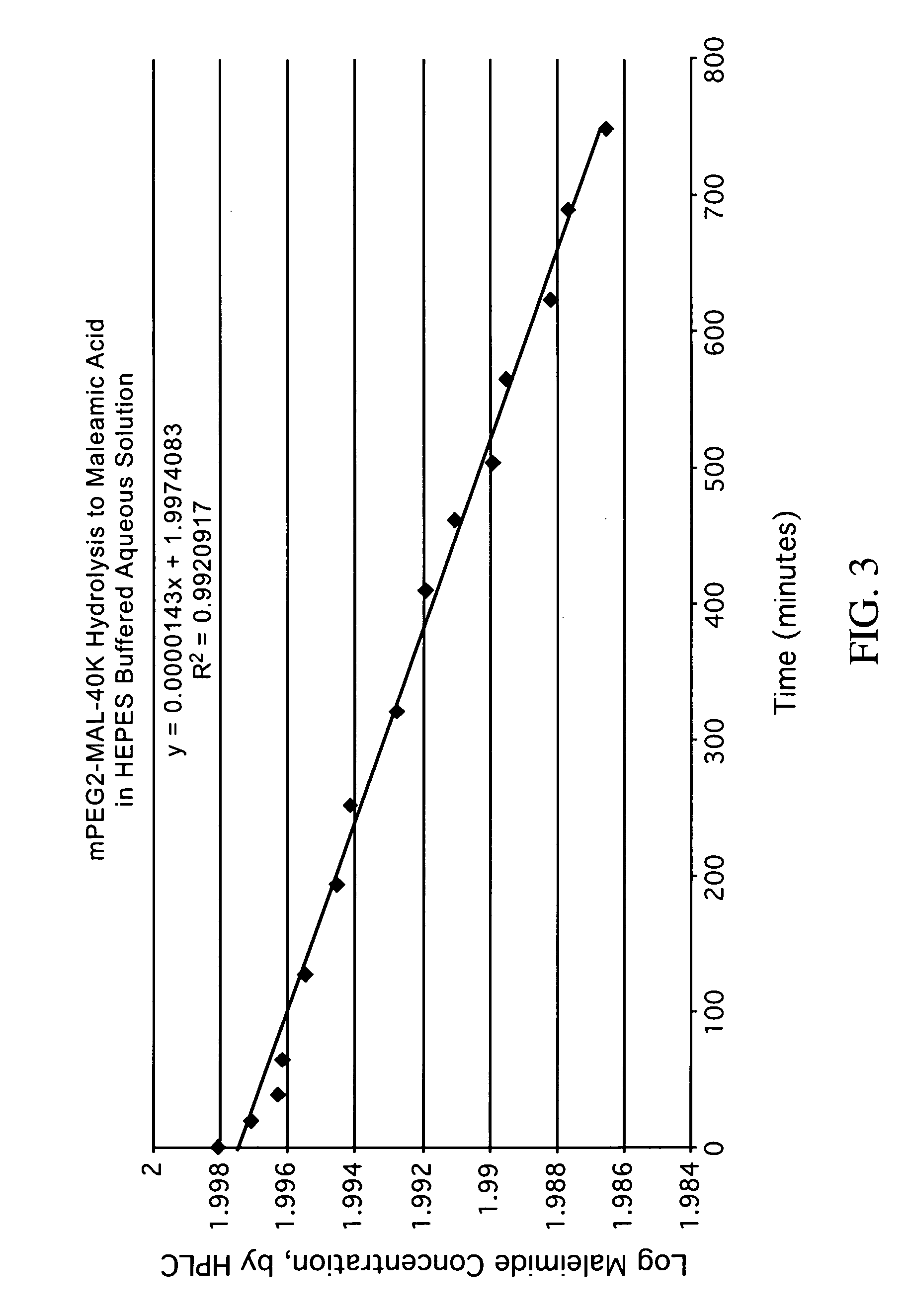Maleamic acid polymer derivatives and their bioconjugates
a technology of maleamic acid and polymer derivatives, applied in the field of polymer chemistry, can solve problems such as problematic hydrolysis, and achieve the effect of reducing the tendency towards hydrolysis
- Summary
- Abstract
- Description
- Claims
- Application Information
AI Technical Summary
Benefits of technology
Problems solved by technology
Method used
Image
Examples
example 1
Hydrolysis Rates of Exemplary Linkered Peg Maleimides
[0210]A series of representative methoxy-PEG maleimides with an average molecular weight of 5000 Daltons was synthesized and studied. The kinetics of the hydrolysis reaction of the maleimide ring for each structure below was determined by measuring the UV absorption at 297 nm of solutions of each mPEG maleimide at a concentration of 5 mg / mL in 50 mM Phosphate Buffer at pH of approximately 7.5.
[0211]The generalized structure for the polymer maleimides is shown below. Exact structures corresponding to each of the linkers (L1, L2, and L3) is provided in Table 1 above.
TABLE 2Hydrolysis Rates of mPEG (5 k-Da) Maleimides(5 mg / mL) in 50 mM Phosphate Buffer (pH ~7.5)as Measured by UV Absorption at 297 nmStructurehalf-life (hrs)Relative RateL1-AMTR8.83.66L1-AMPE19.41.66L1-MCH16.31.98L2-BU19.61.65L2-HE32.31.00L3-ET8.14.01L3-PR11.52.82
[0212]As shown by the data in Table 2, the hydrolysis rates of the illustrative polymer maleimides vary with...
example 2
Hydrolysis of a Branched and Linkered Polymer Maleimide, mPEG2-MAL-40K
[0214]
[0215]The polymer maleimide pictured above, mPEG2-MAL-40K, was obtained from Nektar (Huntsville, Ala.). This polymer derivative undergoes a limited degree of hydrolysis of the maleimide ring under certain conditions to form the corresponding maleamic acid derivative, as described below.
[0216]The hydrolysis reaction was monitored analytically by observing the percentage decrease of the parent maleimide over time by HPLC. The kinetics of the hydrolysis reaction was determined at a pH of about 5.5, using a HEPES buffered solution at approximately 25° C. A linear correlation was obtained from the raw data by plotting either the logarithm of the concentration of either the maleamic acid or the maleimide versus time (the latter is shown in FIG. 3).
[0217]That data was then used to determine the half-life of the hydrolysis reaction, which was calculated to be approximately 34 days under the conditions examined. Thus...
example 3
Hydrolysis Rate Study of Polymer Succinimide Conjugates
[0218]The hydrolysis rates of representative protein and small molecule model conjugates were investigated to examine the correlation between the ring opening tendencies of the polymer-terminated maleimides themselves versus their conjugates.
[0219]Since large biomolecular components such as proteins have a dramatic effect on the retention of conjugated molecules on common liquid chromatography columns, it is generally more difficult to measure kinetics of maleimide conjugates than it is for the polymers themselves. In this analysis, the open acid form of the maleamic acid was not distinctly separable from the unopened or closed ring form. However, a combination analysis based upon size exclusion chromatography (HPLC-SE) and analytical protein electrophoresis (SDS-PAGE) was successfully employed to estimate the ring opening characteristics of polymeric maleimide protein conjugates, as well as conjugates prepared using model non-p...
PUM
| Property | Measurement | Unit |
|---|---|---|
| average molecular mass | aaaaa | aaaaa |
| average molecular mass | aaaaa | aaaaa |
| average molecular mass | aaaaa | aaaaa |
Abstract
Description
Claims
Application Information
 Login to View More
Login to View More - R&D
- Intellectual Property
- Life Sciences
- Materials
- Tech Scout
- Unparalleled Data Quality
- Higher Quality Content
- 60% Fewer Hallucinations
Browse by: Latest US Patents, China's latest patents, Technical Efficacy Thesaurus, Application Domain, Technology Topic, Popular Technical Reports.
© 2025 PatSnap. All rights reserved.Legal|Privacy policy|Modern Slavery Act Transparency Statement|Sitemap|About US| Contact US: help@patsnap.com



